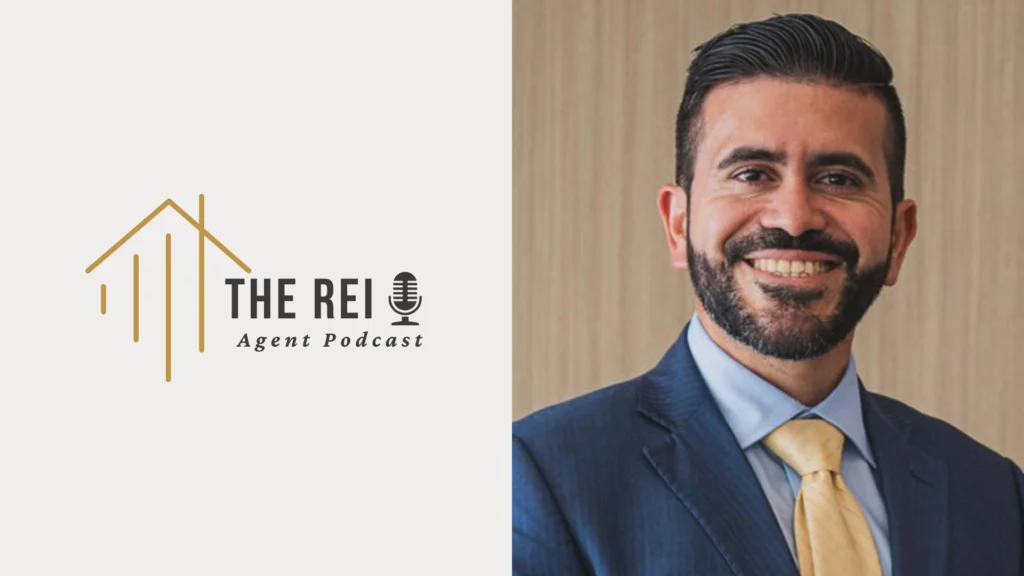Key Takeaways
- KB Home is aggressively cutting home prices in Florida, citing weak demand in key cities like Jacksonville, Tampa, and Orlando.
- Over 172,000 Florida homes are sitting on the market—a 13-year high—signaling a saturated environment that favors buyers.
- Condo markets are crashing across 92% of Florida metros, exacerbated by new reserve laws and record-high insurance premiums.

Cloudy Days for the Sunshine State
Florida’s housing market is unraveling faster than builders can hammer in “For Sale” signs.
One of the nation’s top homebuilders, KB Home, just admitted what many in the industry feared: Florida’s demand is drying up, prices are getting chopped, and the spring selling season is sputtering like a broken generator.
What does this mean for real estate investors?
One word: opportunity—if you know how to navigate the chaos.
Wondering what’s really happening behind the palm trees and polished brochures?
Here are the 6 most critical truths shaking up Florida’s fragile housing market.
- KB Home is slashing prices across Florida to find buyers.
- Inventory is piling up, with over 172,000 listings—highest since the Great Recession.
- Condo prices are falling in 92% of Florida metros—and investors are watching closely.
Let’s dive into the market’s unraveling, the investor implications, and what you can still do to make money while the foundation shakes.
Giant Builder Pulls the Emergency Brake in Florida
KB Home, the Fortune 1000 construction juggernaut, just confessed something stunning: Florida is their weakest housing market right now.
Chief Operating Officer Rob McGibney said they had to cut home prices by $5,000 to $30,000—sometimes even more in Florida—to move inventory.
Their top pain points?
Jacksonville, Tampa, and Orlando.
KB Home reported that Jacksonville alone is sitting on seven months of housing supply, far above normal.
Price cuts are finally helping sales rebound there, but the margins are compressing fast.
Even with deep discounts, KB expects average home prices to decline through the rest of 2025, from $500,700 to as low as $480,000.
Sarasota, Manatee, and Charlotte Counties Lead the Downward Spiral
Beyond the builders, raw numbers tell a harrowing story. Home values have dropped:
- 7% in Sarasota County
- 5% in Manatee County
- 8% in Charlotte County—one of the worst nationwide
Condos, once a staple of Florida investing, are tumbling even harder. In Punta Gorda, values are down 11.4%, while Tampa condos fell 7.9% year-over-year.
According to the latest reports, 92% of Florida metro areas have declining condo values.
Inventory Glut Sends a Warning to Flippers
The scariest stat of all?
Over 172,000 homes are sitting on the market—a staggering 22.7% jump from just a year ago. Some metros are facing housing gluts unseen since the 2008 collapse. The surge is fueled by:
- Homeowners exiting the market due to skyrocketing insurance
- Builders oversupplying as demand falters
- Retirees fleeing rising HOA and reserve fees
RELATED CONTENT
If you’re in the fix-and-flip game, it’s time to get selective.
The wrong buy could trap your capital for months—or worse.
Insurance, HOAs, and Hidden Costs Crush Buyer Confidence
A perfect storm of costs is hammering Florida homeowners:
- Insurance premiums have increased by up to 400% in some counties
- Older condos are now subject to strict reserve mandates, causing HOA fees to spike overnight
For out-of-state investors, these costs often go unnoticed until it’s too late.
❗FLORIDA Real Estate BUBBLE Has BURST…Crash HITTING Florida (MARKET Is FALLING APART In 2025 😮)
Is the Florida housing market finally crashing? The evidence in 2025 is growing stronger, and what’s unfolding across the Sunshine State is shaking investor confidence and homeowner stability alike. Once a red-hot market fueled by mass migration, cheap money, and endless demand, Florida’s real estate scene is now showing serious signs of distress—and it’s not just a seasonal slowdown.
Across key metro areas, home prices are falling at a pace that has surprised even seasoned analysts. Former pandemic boomtowns like Tampa, Sarasota, and Punta Gorda are now leading the pack in year-over-year price declines. The fever-pitch appreciation of the last few years has clearly cooled, and in some places, values are now in full retreat. At the same time, Florida is witnessing a massive inventory build-up. Active listings are surging—reaching 13-year highs—with thousands of unsold homes sitting on the market, many for months without movement. It’s a shift that echoes the early days of past market corrections.
On the transactional side, things are just as troubling. Home sales are plunging statewide, with buyer activity falling sharply and a rising number of contracts being canceled before closing. Builders, including giants like KB Home, are slashing prices by as much as $30,000 to keep projects moving. In some Florida cities, the volume of homes for sale is outpacing demand by a wide margin—an ominous indicator that the balance of power has flipped in favor of buyers.
One of the most devastating factors hitting Florida homeowners is the insurance crisis. Over the last five years, insurance premiums have ballooned by up to 400% in some regions. Insurers are pulling out of the state altogether, leaving homeowners scrambling for coverage or selling under financial pressure. Paired with rising HOA fees from new reserve mandates in condos and climbing interest rates, affordability in Florida has eroded rapidly. What was once an investor’s paradise is now a financial minefield for many.
So, is this the long-predicted correction finally materializing—or is it something bigger? The data paints a sobering picture. The combination of falling prices, bloated inventory, collapsing sales, and affordability pressures is unlike anything Florida’s seen in years. For investors, buyers, and homeowners, this may not just be a cooling-off period—it could be the beginning of a prolonged storm.
This video is used under the Creative Commons Attribution license (CC BY).
The Mass Migration That Fueled—and Now Threatens—Florida’s Housing Surge
Between 2020 and 2024, Florida became the epicenter of domestic migration in the United States, welcoming over 1.5 million new residents, many of them escaping high-tax, high-cost coastal states like California, New York, and Illinois.
Lured by promises of sunshine, no state income tax, and business-friendly governance, the influx was so intense that Florida topped the nation in population growth for multiple consecutive years, according to the U.S. Census Bureau.
This migration wave sent home values soaring.
Entire metro areas, especially in Tampa, Miami, Orlando, and Jacksonville, saw double-digit annual appreciation, with some communities pricing out long-time residents almost overnight.
Investors nationwide rushed in, pouring capital into everything from short-term vacation rentals to suburban build-to-rent subdivisions, hoping to ride the wave of growth.
But now, that migration-fueled boom is turning into a drag.
- Many recent arrivals are second-guessing their move after being hit with sky-high property insurance premiums, rising flood risks, and ballooning HOA fees.
- Some are returning home—or heading to other states—after realizing that Florida’s affordability was short-lived.
- The sudden oversupply of homes in major metros is partly driven by newcomers exiting as quickly as they arrived.
Zillow data shows Florida metros now dominate the list of markets with the fastest-growing home inventory, reversing trends from just two years ago.
Sarasota, Cape Coral, and Fort Myers—once poster children for pandemic-era migration—are now experiencing price declines and slower sales.
What began as an investor’s paradise is now revealing its cracks.
While the migration trend hasn’t stopped completely, the pace has slowed significantly, causing homebuilders and investors to recalibrate expectations.
The lesson?
Migration can supercharge a market, but it can also leave behind volatility when the momentum fades.
For smart investors, this is the moment to study the long-term fundamentals, not just the headline population stats.
When the flood of migration turns into a trickle, only well-positioned properties and markets will continue to perform.
A Silver Lining for Strategic Buyers
Despite the doom and gloom, opportunity is brewing.
- Inventory glut means negotiation leverage is finally back on the table
- Builders like KB Home are offering rate buydowns and heavy incentives
- Days on market are dropping in some areas due to price drops, attracting buyers
For seasoned investors—or brave newcomers—2025 could be the start of the next great Florida acquisition wave.
Assessment
Florida’s housing market is showing all the warning signs of a hard reset—plummeting values, builder panic, rising costs, and bloated inventory.
But history has shown time and again: crisis breeds fortune for those who act wisely.
If you’re an investor with an eye for value and a plan for navigating volatility, Florida might not be a cautionary tale—it might be your next big break.
Related Content:
- Great White Northern Real Estate Retreat! Canadian Snowbirds Flee U.S. Amid Tariffs, Tensions, and Turmoil
- Donald Trump Victory Sparks Massive Optimism and Growing Caution in Real Estate Markets
- Malibu Fires (Hellish Apocalyptic Inferno of Real Estate-Devouring Devastation)
- California Palisades Inferno (A Nightmare of Fire, Government Failure, and Financial Collapse)





















